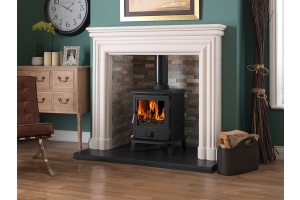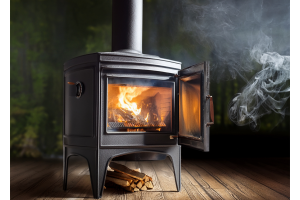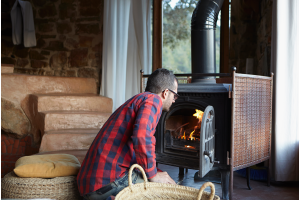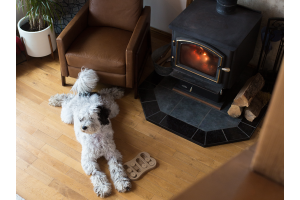How to get the most from your wood burning stove or open fire
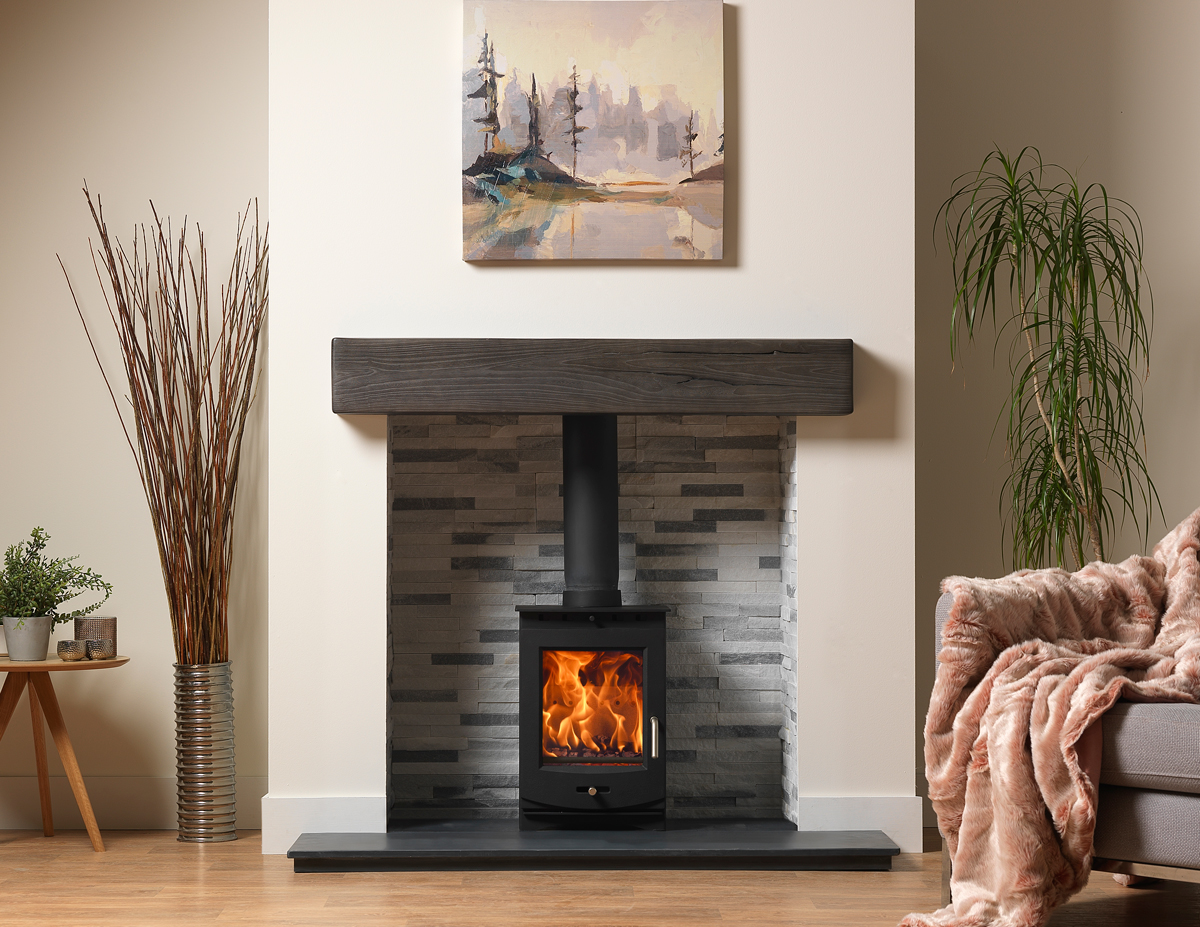
To get the most out of your wood fuel it needs to be dried and ready to burn, this will help you to:
- Get the most heat out of your stove or open fire
- Maximise efficiency, meaning you will burn less fuel and save money
- Reduce the risk of chimney fires
- Reduce air pollution which is harmful to you and your neighbours
Most modern stoves are efficient, well-designed pieces of equipment. The fire box and air flow controls are designed to get the most out of wood-fuel with a moisture content of up to 20%. Unseasoned or wet wood can:
- Be difficult to light and keep alight
- Damage your grate or stove, tarring the inside and blackening the glass
- Allow more tar and soot to accumulate in your chimney increasing maintenance costs and risk of chimney fire
- Create a lot of smoke
- Produce less heat
Green or freshly felled logs are not suitable for burning in a domestic stove or open fire, until they have been dried to 20% moisture content or less!
Terms used to describe Firewood
Kiln dried
Kiln drying can quickly convert unseasoned wood to ready to burn wood in a matter of days. Kiln dried wood should have a moisture content of 20% or less, and if stored and packaged correctly, will be ready to use on the day of purchase.
Seasoned wood
There is no set standard or method for ‘seasoned’ firewood. The term can be applied to any wood that is stored for a period of time to naturally reduce the moisture content between processing and burning.
Firewood that has been air dried and stored under cover for at least 12 months (or 2 summers) can be dried down to around 20% moisture content (depending upon species, climate and storage) and may be suitable for burning on the day purchased.
The Ready to Burn logo means that the supplier has demonstrated, by independent testing, that their firewood has a moisture content of 20% or less.
For any wood fuel purchased, make sure the wood is stored under cover and in the dry before you burn it.
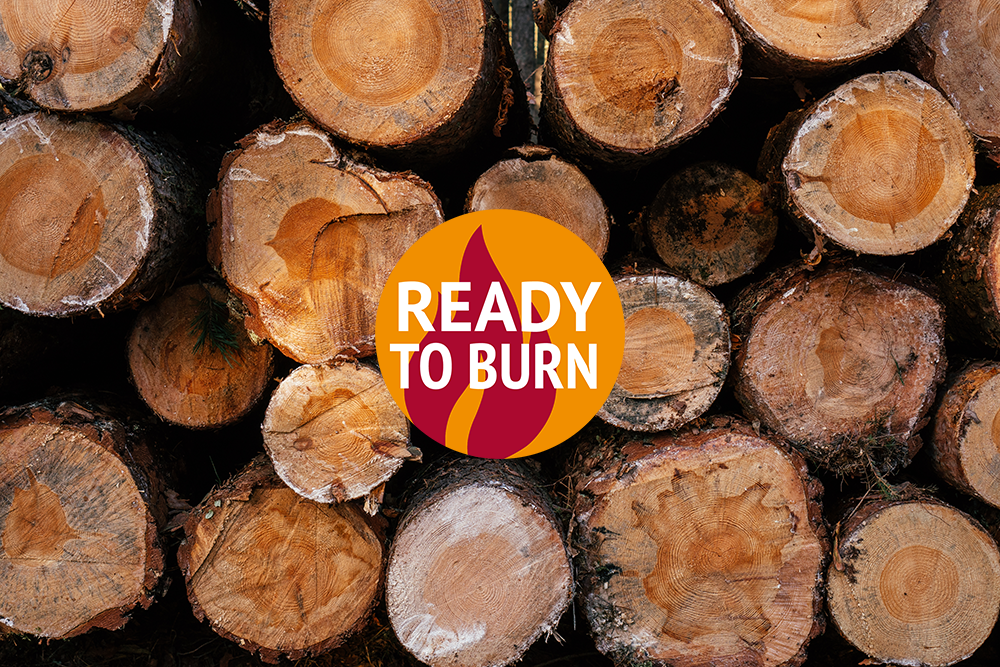
Part Seasoned wood
Wood seasoned for just a few months may be much drier than freshly felled wood, but it will still require further seasoning before it is ready for use. Store the wood under cover with good air circulation and check that the moisture is up to and including 20%, from a random number of samples of split logs with a moisture meter before burning.
Cord Wood
Is the term used to describe longer, un-split logs usually straight from the woodland. It is cheaper to buy, but will require a lot of work to cross cut and split into pieces of firewood suitable for use in a stove or fireplace. Firewood produced at home from cord wood will require seasoning under cover before use.
Which wood is good to burn?
Wood fuel can be from hardwood or softwood tree species or a mixture of both.
Hardwoods
Deciduous, broadleaved tree species such as Oak, Ash or Birch – are generally better as firewood as they tend to be denser and burn for a long period of time.
Softwoods
Evergreen, coniferous species such as Spruce, tend to light more easily and can be good for kindling, but are less dense so will burn faster and compared to a similar sized hardwood log and will provide less heat.
A tonne of dry hardwood logs will occupy a smaller space than a tonne of dry softwood logs. Different logs will require different amounts of time to get fully seasoned and ready for burning.
Wood felled in the summer contains more sap so will take longer to dry.
DO NOT burn treated waste wood e.g. old furniture, pallets or fence pallets or other household rubbish. Treated wasted wood and household rubbish can emit harmful fumes and toxic pollutants, such as arsenic into your home when burnt!
What to look for when buying fire wood
If you don’t have a moisture meter, you can often get an indication of whether logs are newly felled, partly seasoned or ready to burn by:
- Weight – when comparing logs of similar size and the same species; wet wood is heavier
- Sound – a hollow sound when tapping indicates dry logs
- Cracked ends – can indicate dry wood logs
- Bark – the looser the bark the drier the log
- Colour – dry wood can be light in colour
- Price – wet wood is cheaper as it needs further drying before burning
How to naturally season logs
When drying timber it should be stacked on bearers (off the ground) in a sunny, windy location, under a waterproof cover, with open sides. The stack should be well aired and ideally, the prevailing wind should blow through the stack.
If possible, cross cut logs should be split to less than 10cm diameter. This allows moisture to move from the centre of the log to the surface more easily.
Natural seasoning is likely to take two summers or more. Sound – a hollow sound when tapping indicates dry logs.
Smoke Control Areas
Remember: If you are in a Smoke Control Area you can only legally burn wood on a Defra Exempt Stove. You could face a fine of up to £1,000 if you break the law.
To find out which areas of England are designated smoke control areas, please visit the smoke control area map. Please note, the data on this map is indicative only and you should always contact your local authority to confirm if you live in a smoke control area.
There are additional regulations that apply to burning in these areas and you could be committing an offence if smoke is released from the chimney of your home: See www.gov.uk/smoke-control-area-rules for details.





